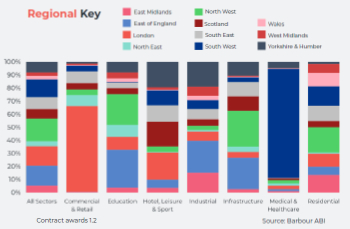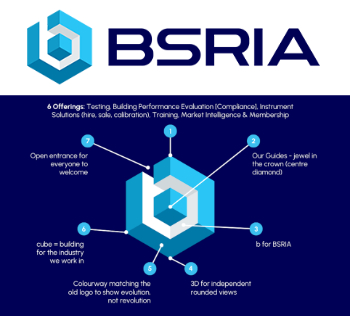Forecasting future performance with confidence
Contents |
[edit] The challenge
To report the most likely project outcome with confidence.
Project reporting typically focuses on a single anticipated outcome rather than showing a range of potential outcomes with their associated levels of confidence. Providing a range of potential outcomes with likelihoods:
- Allows early intervention when projects stray off target, thereby increasing the likelihood of a successful outcome.
- Enables potential changes in funding requirements to be identified in a timely manner along with necessary approvals that can then be processed without delaying the project.
While the text below relates to the internal reporting of projects, it could equally be used to report potential project outcomes from supplier to client.
[edit] The idea
Assessing and reporting a project’s most likely financial outcome, as well as best- and worst-case scenarios.
The anticipated project outcome is presented as 'most likely', while also showing the best and worst cases. The most likely, best and worst cases are tracked on a regular basis to provide trends, giving a further level of confidence in the project reporting.
This gives managers and project leaders a quantified perspective on the potential project outcome, which is more tangible and useful than a single forecast outcome or a 'Red, Amber, Green' status. The process is simple and can be readily adopted, with limited training, unlike sophisticated risk analysis insight articles.
[edit] The impact
Better awareness of most likely project outcomes.
Skanska uses the technique to improve the predictability of project outcomes, which in turn helps with business financial forecasting. The approach is used for profitability and cash forecasting at a project and business unit level, giving senior management a better appreciation of a project or business unit’s financial health.
[edit] The barriers to innovation – and the solutions
It is management, not financial, accounting.
Key internal barriers include:
- A high degree of transparency is required in the project life cycle along with trust between senior managers and project teams. Managers and project leaders must not abuse the trust generated by transparent sharing of project performance data.
- Incentivisation, which is linked to the previous point. When setting bonus targets, it is important not to abuse the transparency required for the technique to be effective.
- 'That’s not the way we do things around here' or 'not invented here' mindsets, typical of any change. Strong leadership overcomes this.
- Confusion with strict accounting rules. The use of confidence reporting is part of management accounting and requires judgement and assessment, not simply the strict application of accounting rules.
There are no key external barriers to this approach. As it relates to management accounting it is not governed by strict accountancy rules
[edit] The way forward
Introducing confidence reporting through the use of a pilot, alongside existing reporting systems allows project teams and management to build an understanding of, and confidence in, the process.
A relatively simple process will be required along with training therein. The best results are obtained when the project management team establishes and owns the forecasts, not simply leaving it to the finance team. The finance team must, however, be involved to ensure there is no contradiction with accounting rules.
The approach demands transparency and trust between the project team and those to whom the numbers are being reported. The approach is an art, not a science, and therefore needs people who are not merely slaves to process.
Written by:
Roger Bayliss, Senior Vice-President, Global Operational Efficiency, Skanska, Sweden
This article was originally published on the Future of Construction Knowledge Sharing Platform and the WEF Agenda Blog
Featured articles and news
CLC and BSR process map for HRB approvals
One of the initial outputs of their weekly BSR meetings.
Building Safety Levy technical consultation response
Details of the planned levy now due in 2026.
Great British Energy install solar on school and NHS sites
200 schools and 200 NHS sites to get solar systems, as first project of the newly formed government initiative.
600 million for 60,000 more skilled construction workers
Announced by Treasury ahead of the Spring Statement.
The restoration of the novelist’s birthplace in Eastwood.
Life Critical Fire Safety External Wall System LCFS EWS
Breaking down what is meant by this now often used term.
PAC report on the Remediation of Dangerous Cladding
Recommendations on workforce, transparency, support, insurance, funding, fraud and mismanagement.
New towns, expanded settlements and housing delivery
Modular inquiry asks if new towns and expanded settlements are an effective means of delivering housing.
Building Engineering Business Survey Q1 2025
Survey shows growth remains flat as skill shortages and volatile pricing persist.
Construction contract awards remain buoyant
Infrastructure up but residential struggles.
Home builders call for suspension of Building Safety Levy
HBF with over 100 home builders write to the Chancellor.
CIOB Apprentice of the Year 2024/2025
CIOB names James Monk a quantity surveyor from Cambridge as the winner.
Warm Homes Plan and existing energy bill support policies
Breaking down what existing policies are and what they do.
Treasury responds to sector submission on Warm Homes
Trade associations call on Government to make good on manifesto pledge for the upgrading of 5 million homes.
A tour through Robotic Installation Systems for Elevators, Innovation Labs, MetaCore and PORT tech.
A dynamic brand built for impact stitched into BSRIA’s building fabric.
BS 9991:2024 and the recently published CLC advisory note
Fire safety in the design, management and use of residential buildings. Code of practice.
























